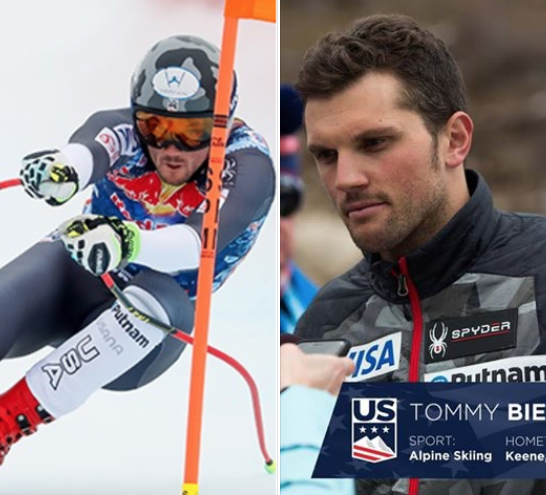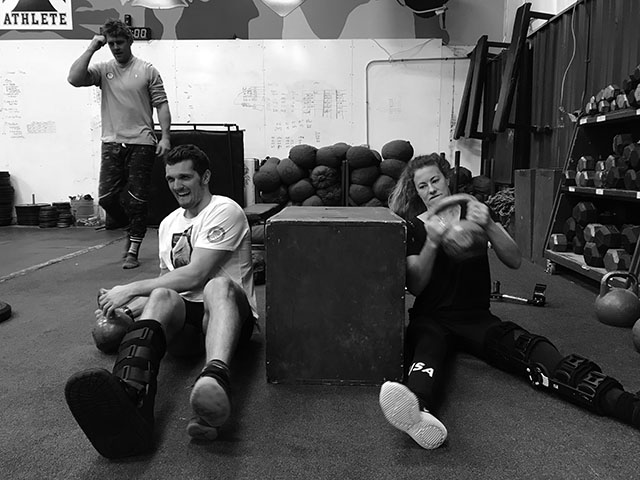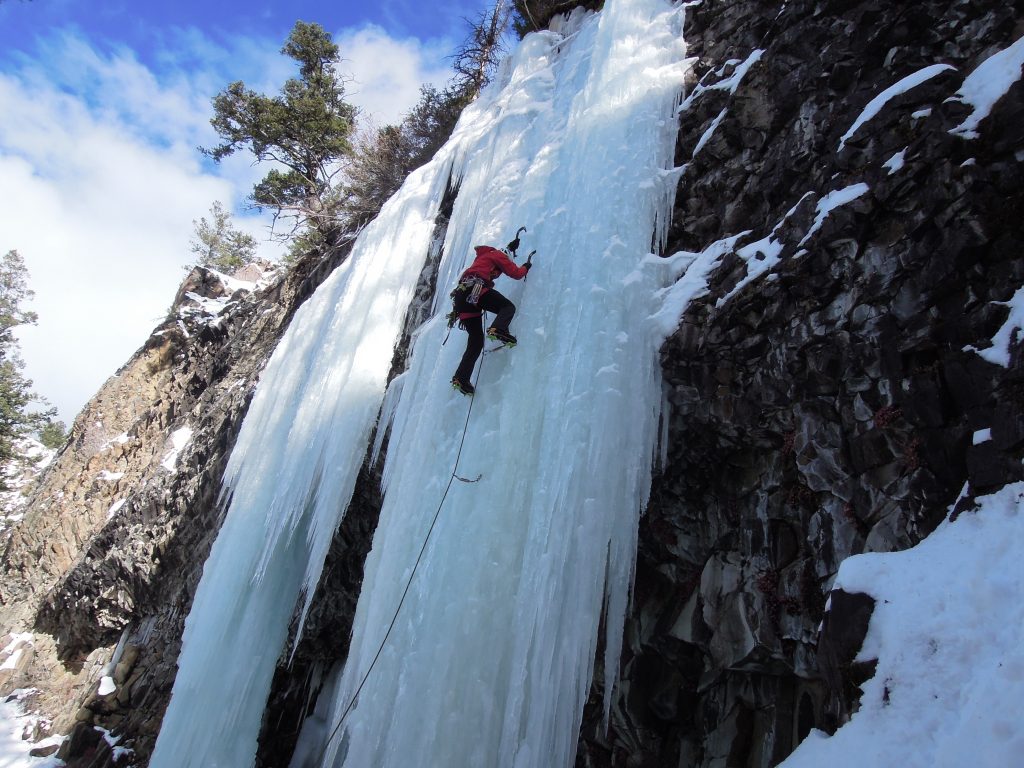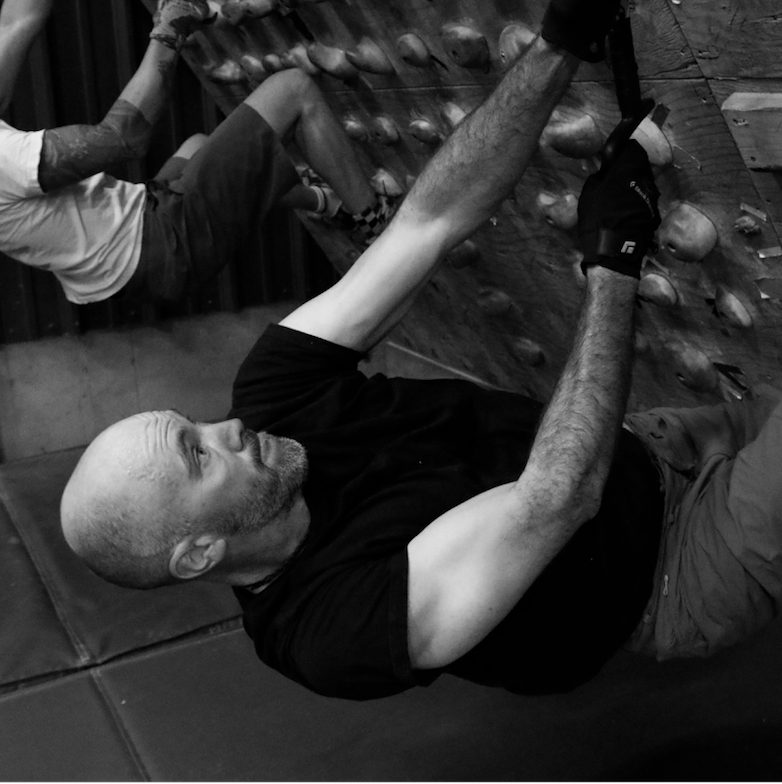QUESTION
I’m an active duty Army officer who is looking for a PT program, and I remember a lot of guys using Military Athlete when I was supporting a special forces group. In one instance, a guy who had been significantly hurt used a custom program from you that brought him back not only full mobility, but he was athletically in the best shape of his life upon completion of it.
I am about to turn 39, stopped lifting for about 8 months, had a couple injuries, and have become slow. I’m determined to get myself back in the game, and willing to pay for your programs to do it.
I’m looking for a program that will help me; 1. Look good, 2. Perform athletically better than the young soldiers I lead in garrison and combat (max that new pt test), and 3. Will work for me as I continue to get old (if I am truly getting old… which is bullshit!)
I have access to gym equipment on post comparable to most crossfit boxes, as well as a good 400m track and run routes. PT is on my own in this assignment, and I have home stability from now through the end of January.
I tried checking the “how to choose a program” page, but it still left me with questions on what to buy. I would be interested in any advice or help you can give.
ANSWER
I’d recommend the plans/order in the
Greek Hero series of plans. These are designed as day to day programming for Military Infantry and SOF, and concurrently train strength, work capacity, endurance (run, ruck), chassis integrity (core) and tactical agility.
6 weeks prior to the ACFT, drop out of the Greek Hero plans and train sport-specifically for the ACFT using the
ACFT Training Plan.
– Rob
QUESTION
I’m an active duty Army officer who is looking for a PT program, and I remember a lot of guys using Military Athlete when I was supporting a special forces group. In one instance, a guy who had been significantly hurt used a custom program from you that brought him back not only full mobility, but he was athletically in the best shape of his life upon completion of it.
I am about to turn 39, stopped lifting for about 8 months, had a couple injuries, and have become slow. I’m determined to get myself back in the game, and willing to pay for your programs to do it.
I’m looking for a program that will help me; 1. Look good, 2. Perform athletically better than the young soldiers I lead in garrison and combat (max that new pt test), and 3. Will work for me as I continue to get old (if I am truly getting old… which is bullshit!)
I have access to gym equipment on post comparable to most crossfit boxes, as well as a good 400m track and run routes. PT is on my own in this assignment, and I have home stability from now through the end of January.
I tried checking the “how to choose a program” page, but it still left me with questions on what to buy. I would be interested in any advice or help you can give.
ANSWER
I’d recommend the plans/order in the
Greek Hero series of plans. These are designed as day to day programming for Military Infantry and SOF, and concurrently train strength, work capacity, endurance (run, ruck), chassis integrity (core) and tactical agility.
6 weeks prior to the ACFT, drop out of the Greek Hero plans and train sport-specifically for the ACFT using the
ACFT Training Plan.
QUESTION
I am thinking about going with the body weight foundation program because I live on a boat and will be in the Caribbean all winter constantly on the move. Last ski season, I had a fall in which I tore my left hip labrum and sprained my mcl, which has caused severe it band syndrome. Would it be possible to adjust the body weight program running with swimming?
ANSWER
Sure – just use time to do the exchange. Assume you’d run 10 min miles so if the plan calls for a 3-mile run, swim for 30 minutes.
– Rob
QUESTION
I’ve followed you guys for a while now and am learning a lot. I look forward to the articles and am definitely interested in getting a plan. I like the athletes subscription the best but not sure about a monthly cost. I’m trying to find a program and see how it goes for me.
I’m currently a police officer in a busy city and am looking to become stronger and faster in order to keep up haha. I’m in OK shape now but could always do better. I’m also in the military (reserves) and need to stay fit to those standards as well. Anything you might suggest is appreciated!
ANSWER
Plans and order in
Spirits Packet of plans – which are designed as day to day programming for full-time LE patrol/detective. The plans concurrently train strength, work capacity (sprint emphasis), chassis integrity (core) and tactical agility. Start with
Whiskey.
– Rob
QUESTION
My question is should I incorporate any long distance runs with the hotshot program?
ANSWER
You can add in a long run (8-12 miles) on Saturdays.
– Rob
QUESTION
At the present moment I am on week 4 of 357 strength and week 5 of the 2 mile rum improvement plan. I have enjoyed both and seeing gains in both strength and run times.
A little about myself. 52 years of age, weight 188 and 14.5% body fat. I lost 30lbs and 7% body fat since January 1, 2018 to September 17, 2018. No excuses work and stress let things get away from me. I have been cross-fitting for for over 6 1 /2 until a month ago. Unfortunately, the programming has become heavy squat dominant which was destroying my posterior change. I decided to list my workout goals of strength, run consistent miles, endurance and carry weight for long period of time( rucking). Upon researching different programs and decided upon MTI. Really felt comfortable with all your research and thought that went into your programs. So far everything has been going well And planned to do more MTI programs.
Unfortunately, this past Monday while finishing my last power clean I set the bar down and passed out causing me to hit the ground causing a concussion. I have been to doctors to determine the cause since this has never happened to me before. Apparently, I have a enlarged Aorta which may have been caused by lifting heavy weights and straining. My heart, cholesterol, heart rate is fantastic. I admit I have lived with the attitude of always go as hard as you can go. Doctors have said to stop lifting heavy. For your info. Recent 1RM lifts were back squat 345, front squat 315, deadlift 375, bench press 265, snatch 155, power clean 225. Now I have to reassess my fitness plan. Here is my question. With your knowledge do you have any experience with this situation with your other athletes? And do you have a recommendation of MTI plans to meet my goals listed above? Any advice would be appreciated.
ANSWER
Your passing out is a first for me – I’ve never seen that before.
Programming? Complete the Run Improvement Plan as prescribed – it includes bodyweight and limited dumbbell strength training.
After – move to SF45 Delta – which deploys bodyweight strength training, and solid endurance work.
– Rob
QUESTION
I’m sure you get 100 of these a week so Ill try to keep it as straightforward as I can. Just turned 40 (feel 28) and am still in good shape, 6 foot, 175. I need more conditioning out of this than I need to lose weight.
Did MWCS in Mittenwald (Bundeswehr) as well as did 3 rotations as a DoD contractor in Afghanistan 06-09 after being deployed in Kosovo 99-01 and ETSing. Basically, I want to get back to that point and be able to crush a 2 or 3 mile, ruck weight in the desert where I live in south Utah, build strength (useful strength, dont care about mirror muscles) and just have a ton of short/burst energy. I do work out now, but feel a bit aimless.
Question is, what plan? Not training for anything specific. Right now I would say my 2 or 3 mile times wouldn’t be anything great because I haven’t trained them on a timed goal and my pulI up is pretty pathetic. I was looking at something like the Humility but wasn’t sure if it had the right mix for what I was looking to get out of it and figured you would know right off; or something like run X program first for the duration and then progress to Y program, etc.
Let me know what you think and what I should be looking at.
ANSWER
Do the Military OnRamp Plan for a couple weeks – if you’re not being pushed, move on to
Humility.
– Rob
QUESTION
I am a 33 year old Military Athlete looking to mainly improve my endurance and work capacity without loosing or slightly increasing my strength. I would like to get into adventure racing in the future as well. I am in decent shape right now. My question is what is the main difference between Valor and Fortitude? Is one meant to be a work up into the other? Also if I did the package that includes multiple programs is that meant to be a year round progression? Last question, I’m also interested in doing one of the online courses. Which would you recommend for my current goals.
ANSWER
Fortitude’s emphasis is strength and endurance. Think heavy barbell-based strength training, with added moderate pace/distance running and ruck running.
Valor’s emphasis is work capacity. Intentense, multi-modal gym-based work capacity, plus speed over ground focused endurance – hard, fast 1-mile run and ruck run intervals.
Either plan can be completed in isolation depending upon your goals. If doing both, do Fortitude first.
I’m assuming your taking about the Virtue Packet, when you describe a “package”. The plans in this packet are designed to be completed in the order listed – you can repeat the entire packet if you’d like, but you’d want to skip the first plan in the series (Military OnRamp) the second time through. Both in terms of fitness and to keep it interesting, I’d rather have you move to the Greek Hero Packet after Virtue.
Online Courses? These are designed primarily for strength coaches interested in one or more of our strength training progressions. If you’re at the point where you are ready to begin your own programming, one of these might be appropriate. I’d recommend the TLU Strength course.
– Rob
QUESTION
What program would you suggest for someone out of shape and just stopped a 10 year cigarette habit, 30 years old?
ANSWER
– Rob
QUESTION
I’m in need of additional coaching – please let me know which of your options suits my situation best. I’m 31, and ultimately training to go back into the USAF as an ALO/TACP with the Air National Guard. I have a bit of time on my side as they handle my paperwork.
I have an affinity for strength exercises, but my running/endurance capacity is lacking. I also have a history of shin splints (flaring up a little right now), occasional hip pain and lower back pain (seems to be under control). How do I approach fitness holistically? Get faster, stronger, reduce joint pain, increase mobility, increase endurance – I want to have more energy and capacity to play with my kids day-in-day-out, be over-prepared for the demands of being an ALO, and also tackle seasonal adventures like backcountry hunting (never been) and spearfishing (I’m recently PADI Level 1 freediving certified).
Approaching running, rucking, lifting, swimming, mobility/recovery all at the same time has me at a loss. I’d appreciate your guidance, and happy to provide further details.
ANSWER
I’m not sure exactly what you’re asking me here. I will say it’s taken me many years of hard work to develop the programming theory we deploy in our programming – and I can’t break that down for you in an email.
If you are looking programming that combines run, ruck, swim, strength, work capacity and chassis integrity, with a little mobility, I’d recommend the plans/order in the
Pirate Series of plans – which are designed for Military/LE SOF with water-based mission sets.
To achieve your goals, pick a plan, and commit to it. There’s no shortcut – which you know already.
– Rob
QUESTION
I’m a full time Police Officer and a US Navy Petty Officer. I’ve let myself go physically over the last few years (I’m 26 now) and I’m looking to get fit physically and mentally. My current goals are to ace the Navy PT test, qualify for either Aircrew school or USMC Field Medical Training Battalion (whichever opportunity comes first), and to generally be harder to kill since I work in a high crime/violent area.
I’m very interested in several of your programs however I’d like to get some advice on what you believe would be the best for for my goals.
I’m currently healing up from being seriously injured during a foot pursuit where a K9 chewed apart my leg so even when I’m healed enough to run I’m not sure I should be swimming for some months. My last Navy PT test I scored as follows:
Push-ups – 105 in two minutes
Curl ups -102 in two minutes
1.5mi run – 11:54
I have gained approximately 20lbs and lost a lot of muscle since this and it’s caused me to slip into a shithead state of mind so a solid program seems like a must for me to get back on track.
Thank you for your time and the product/services that y’all provide!
ANSWER
Don’t be fooled by “bodyweight” – this plan is no joke and a great way to jumpstart your fitness.
Email back after you’ve completed it.
– Rob
QUESTION
Need advice on which plan would be best to help improve my 2 mile and 5 mile run time, while also making gains in rucking and overall functional fitness for combat. Something I could work in with my units regular morning PT. Would the On-Ramp be good for this?
ANSWER
What I recommend depends upon the intensity and type of unit PT you’re doing. Most Unit PT is bodyweight/running focused, and if that’s the case, I’d let your morning unit PT address running, and train strength with extra training – specifically the MTI Relative Strength Assessment Training Plan.
For overall military fitness – run/ruck/strength/work cap/core – the Military OnRamp Training Plan is a great place to start our programming, as long as you don’t overtrain with your Unit PT.
– Rob
QUESTION
I am looking for a plan to bulk up on upper body muscle and get ready for ski season.. Any advice?
ANSWER
– Rob
QUESTION
I was hoping you had some suggestions to improve the Leg Tuck event on the ACFT- currently I can barely do one rep, and that’s at the front end of the work out. Granted I need to trim down significantly, but I’d like some other exercises that increase my ability to perform that event while I do so.
ANSWER
Best would likely be to do the Leg Tucks but with a shorter range of motion.
– Rob
QUESTION
First of all, thank you so much for what you guys do. I think you have a great program and I really enjoy the workouts you guys have created.
Just a quick background – in the Army, decently fit but just finished recovering from an injury and finding myself not as in shape as I’d like to be. I do plan on going to selection sometime in the near future (several months). I do have a homegym with a squat rack and a few additional accessories (dumbbells, medicine balls, sandbag, etc).
I am looking to dedicate myself to a solid two-a-day plan that incorporates cardio (running, rucking) and/or bodyweight training during morning Army PT hours, and homegym sessions in the afternoons after work. I am struggling to find a good combination of workout plans to accommodate this, especially with sound variety and recovery in mind. Using the subscription, I’ve been using a combination of Humility, Fortitude, and Big 24, but I feel a little lost and I know there’s a better way to approach what I want to do here. Just thought I’d reach out. Thank you for your advice!
ANSWER
Better would be to do one plan and train once per day. I’d recommend
Hector.
– Rob
QUESTION
I’m a 28yrs old LE Detective with a crossfit-background and I‘ve just started my 2nd round on the Spirits-Package. I’d plan to try the selections for the part-time SWAT-team in roughly a year.
Therefore I need a better 5km-time. So, should I take on a plan for running besides the normal training or are the shuttle sprints and the Friday run with some modifications enough?
ANSWER
Best to train for the 5K specifically. The
Running Improvement Training Plan includes focused programming for a 3-mile assessment – which is close to a 5K. You could double up with the Spirits programming – either with 2-a-days, or alternating sessions – spirits monday, run improve tues, spirits wed, etc.
Only do the running sessions from the running improvement plan – not the strength sessions.
– Rob
QUESTION
I’m trying to select a training program and would appreciate some guidance in choosing. First though, I want to thank you all for your program focusing on the FBI PFT. I recently passed the PFT and I really credit that program with getting me ready. So thank you!
But, I’ve found that I have lost some strength and was looking for a program that would help me build my strength back up while maintaining my 1.5 mile/300m sprint times. I’m a little lost on how to proceed to build that strength back, but not put on unnecessary mass that will slow me down. I saw the LEO Spirits plans and thought that might be what I need but would appreciate any input.
ANSWER
The
Spirits Packet Plans include sprinting and some short distance running. Instead of trying to be always ready for your PT test, better is to train your mission-direct fitness most the time (Spirits Plans), and then 3-6 weeks before your scheduled PT test, drop out of these plans and re-do the
FBI SA PFT Training Plan directly before your test … then drop back into the Spirits Plans, or with a subscription, the LE Officer Daily Sessions.
– Rob
QUESTION
I’m in the process of rehabing a shoulder injury. I’ve recently purchased the SF45 Alpha – Delta plans (for the future) and have a question regarding their implementation. Are they intended to be used in order from Alpha to Delta? I’m asking because SF45 Bravo is more leg and back (and running) focused, which is more appealing for me while my shoulder heals. I would still have to stay light on the the push press and other overhead movements, but I don’t want my leg strength, work capacity, and endurance to suffer. Thoughts?
ANSWER
These plans are not progressive – so you can complete them in any order you chose.
– Rob
QUESTION
I’m an avid mountain runner based in SLC, Utah and want to dive more into backcountry skiing this winter. I really enjoy touring, and am looking for a plan that lets me train for the ski season with a mix of both mountain running (I’m talking, like, a lot of elevation) and a little bit of gym work. Do you have any plans that are a little less gym heavy then your current Backcountry plan, that incorporates mountain running or trail running?
ANSWER
You could do the
Ultra Pre-Season Training Plan which includes leg-blasters to help with the downhill part of skiing, and has programmed mountain running. You’ll want the uphill/vertical to train legs/lungs for skinning as you know.
– Rob
QUESTION
I have been browsing through your training plans, I have used your exercice guide for some time now, and I am an avid reader of your studies, I really like your philosophy and agreed to your theories (e.g. the trash reps). I couldn’t decide to pick a plan, so I am going to tell tou my story so you can advise me. This is going to be a long e-mail.
When I was 27 I had a class III obesity, started to have related problems such as high blood pressure, and was starting to be a candidate for stomach reduction surgery. Then I decided to arrange it and did a diet and exercise plan all by myself. Did a lot of gym, swimming, biking, and afterwards running (when my knees could withsand it). I was able to lose 49 kg to reach a bodyweight 87 kg, and comple two marathons, Barcelona march 2012 and Brussels october 2012 (around 4 h, not a great time but a great achievement for me personally). After that I grew tired of only running, so I started to train my upper body as well. In order to maintain my motivation for working out I searched for a challenge, so I trained for and finished Barcelona Goruck challenge on june 2013. At a bodyweight of 94 kg I felt like a beast, felt better than anytime before or after in my life. This woke up my interest for functional fitness (you should keep in mind that then not even CrossFit have reached Catalonia yet). Unfortunately that summer a car ran over me while I was cycling, and that was the very start of my problems. I couldn’t train for months, and when I was back, I started to have minor injuries, pain, etc, that kept me on and off working out since. In the meanwhile I married and had a child, so I do not own as much of my time as I did before. Nowadays I am at 107 kg of bodyweight, really struggling to stay fit, I try to work out 2-4 times a week, but in a random manner. I suffer lower back and knees pain.
So this is my story. I have at my disposal a small “garage gym” with the following equipment:
- rack,
- bench,
- barbell and plates up to 150 kg;
- 10 and 20 kg dumbbells,
- 5, 12 and 25 kg slam balls
- various kettlebells up to 20 kg
- 40 and 60 cm plyo boxes
- an old tractor tyre of I suppose 80 kg
- an old tennis court (I use it for shuttle sprints mostly)
What would be your advise to pick a plan in order to get back in shape (if is that possible) and feel better?
Thank you for your attention and sorry for my bad english.
ANSWER
Don’t be put off by “bodyweight” – this plan is no joke. As well, it automatically “scales” to your incoming fitness.
Email back after completing.
– Rob
QUESTION
20 Weeks until SFAS Suggested path?
ANSWER
Here’s what I recommend:
Weeks Plan
8-11
Valor (first 4 weeks)
12 Total Rest
– Rob
Subscribe to MTI's Newsletter - BETA


 Three weeks post-operation I started feeling that something was wrong with my rehab; I was having high levels of pain, weird bumps on my scar, and no progress when it came to my range of motion and strength. Unfortunately, I was right. I had an infection but it took five months for the doctor to accept it and treat it properly. At four weeks post-op, I went back in for a second surgery but nothing seemed “too alarming” so the doctors simply cleaned it out and put me on a PICC line (antibiotics intravenously), and I assumed I was fixed. As time went on, roughly three months, my scar kept opening through two distinct holes and oozing, which was disconcerting but my doctor assured me that everything was okay. Another two months passed and the holes were still very much there, but with no associated pain. With mounting doubt in my mind I decided to go back to the doctor for his assessment.
Three weeks post-operation I started feeling that something was wrong with my rehab; I was having high levels of pain, weird bumps on my scar, and no progress when it came to my range of motion and strength. Unfortunately, I was right. I had an infection but it took five months for the doctor to accept it and treat it properly. At four weeks post-op, I went back in for a second surgery but nothing seemed “too alarming” so the doctors simply cleaned it out and put me on a PICC line (antibiotics intravenously), and I assumed I was fixed. As time went on, roughly three months, my scar kept opening through two distinct holes and oozing, which was disconcerting but my doctor assured me that everything was okay. Another two months passed and the holes were still very much there, but with no associated pain. With mounting doubt in my mind I decided to go back to the doctor for his assessment.




